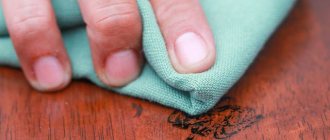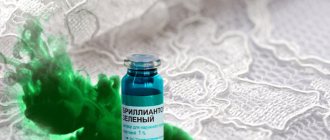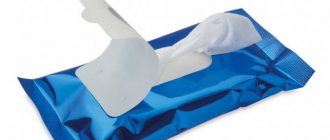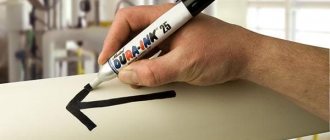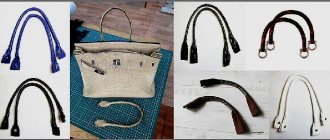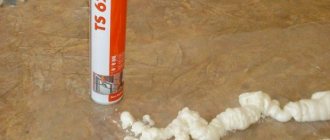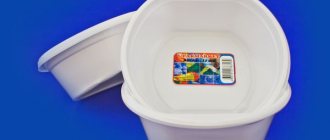Share
Tweet
+1
Pin
Marks from a pen or felt-tip pen on leather upholstery can appear in any home where there are small children. Kids love to draw, but most often they choose walls and furniture rather than album pages as an easel.
Also, stains on the upholstery can appear due to the carelessness of adults. In any case, it is important to remove marker or pen marks from the upholstery as soon as possible. It is much easier to remove stains early, before the ink components are deeply absorbed into the upholstery.
How to wash felt-tip pen from sofa leather
There are different ways to remove markers from leather sofa upholstery. The choice of the appropriate method depends on the type of felt-tip pen, or more precisely on the ink used in it.
The method for cleaning your sofa depends on the type of ink. Ink can be:
- washable – watercolor (water-based) and chalk (based on liquid chalk);
- persistent - alcohol-based, paint-based, phosphorus gel-based (fluorescent), oil-based.
You can decide how to clean a felt-tip pen from the leather of a sofa only by determining its type (it is indicated on the packaging), otherwise you can permanently damage the upholstery!
The ink in felt-tip pens can be permanent and erasable. Getting rid of erasable ink is not difficult. Fresh traces of chalk ink can be easily removed from the leather of the sofa with a dry cloth; if the dye has already rubbed over the surface, then you can remove the traces with a damp cloth or napkin. A damp cloth can also easily remove watercolor markers.
You can easily clean the sofa from erasable ink using a simple soft cloth.
You can wipe off any dyes from a leather sofa only with a soft cloth (preferably microfiber), without pressing, so as not to rub or smear the paint on the upholstery and stretch the leather!
Getting rid of other types of ink will be much more difficult.
Getting rid of stubborn inks can be quite difficult. How to clean a sofa from persistent markers at home? To do this, you can use proven folk or special remedies.
To clean the sofa, you can use both special and folk remedies.
Traditional methods
To remove persistent dyes from leather furniture, you will have to use fairly aggressive substances. But if all recommendations are followed, the upholstery will not be damaged, and its appearance will be restored.
Folk remedies with fairly aggressive compositions are used.
Before removing the stain, be sure to test the product on an inconspicuous area!
Alcohol-containing products
Rubbing alcohol, vodka, cologne, and ammonia will help remove traces of persistent alcohol markers. To do this, you need to moisten a cotton pad or a small piece of cotton wool with the liquid and wipe the stain until the marks disappear (the cotton wool must be changed frequently so as not to rub the paint on the upholstery).
Alcohol-based products will help get rid of stubborn markers. The cleaned area must be washed with soapy water and then with clean water, dried well with paper towels or microfiber and applied with a moisturizing impregnation, otherwise the surface may change color or become damaged. In general, alcohol dyes, although they are persistent, are quite easy to clean.
You can try to remove fresh marker marks with an alcohol wipe. Switch to using alcohol-containing liquids if you are unable to remove the paint with a napkin.
Solvents
Colorless nail polish remover, acetone, refined gasoline, and kerosene will dissolve traces of paint markers. The method for removing contaminants with solvents is the same as when using products containing alcohol.
Solvents will remove paint markers from the sofa.
Hydrogen peroxide
Peroxide allows you to wash the felt-tip pen from light skin. The method for removing contaminants is the same as in the two previous options.
Never apply alcohol-containing liquids, solvents or hydrogen peroxide directly to the sofa upholstery. This can lead to cracks and deformations!
Pharmacy peroxide will rid a light-colored sofa of traces of felt-tip pens.
Laundry soap, liquid and powder for washing dishes
These products are suitable if you need to remove stains from phosphorus and deep-penetrating oil markers:
- A piece of laundry soap should be grated on a fine grater, add water and mix everything until a thick “mush” forms. Apply it to the stain, rub lightly with a soft cloth and leave for 10 - 15 minutes. Then remove the dried mixture, thoroughly clean the surface with a damp cloth and dry with paper towels.
- Half a teaspoon of dishwashing detergent should be diluted in 0.5 liters of warm water. The resulting solution is also used as a mixture of laundry soap.
- Make a thick mixture of water and dishwashing powder, generously cover the stain with the mixture, rub lightly and leave for 5 minutes. Then remove any remaining powder, rinse and dry the treated area.
A soap mixture based on laundry soap will rid furniture of phosphorus and deep-penetrating oil markers.
Sunflower oil
Sunflower oil also works very well with oil markers. The oil is applied to the stain using cotton wool and left on the upholstery for at least 5 hours, then washed off with soapy water and warm water. The treated area is dried with paper towels.
Sunflower oil will help fight oil markers. If dirt ends up on the covers or other removable elements, then, of course, before using aggressive substances, you should try to wash them (following the manufacturer’s recommendations on the washing regime).
If the sofa has removable covers, you should try simply washing them before using aggressive products.
Special means
To remove stubborn, stubborn marks from felt-tip pens, you can use special stain removers. When choosing a product, remember that only gentle chemicals are suitable for use on leather upholstery. Stain removers with a whitening effect can only be used on white skin.
Professional stain removers with a whitening effect are used only on white skin. When applying cleaning agent to a stain, be sure to cover the area around it to prevent discoloration of the upholstery. Do not exceed the application time specified in the instructions, as this may cause discoloration and damage to the material. In addition, visually monitor the process, so you can notice undesirable reactions of the material to chemical exposure.
When applying a special product, follow the instructions to avoid damaging the upholstery!
When using any stain remover, read the instructions carefully and follow them strictly.
Recommendations
- To begin with, use gentle products; aggressive cleaning agents are used only in extreme cases.
- Be sure to read the instructions for the chemical, as it can remove stains from some surfaces and destroy others.
- Solvents are not used on wood.
- Dry powders cannot be used on hard or glossy surfaces.
- Aggressive solvents are not used for plastic, as they can ruin it.
- Before using any method, you need to check its effectiveness and safety on an inconspicuous area of the surface being cleaned.
Peculiarities of using a felt-tip pen on different types of upholstery
Now let's look at how to clean felt-tip pen from a sofa with other types of upholstery.
The method of cleaning a sofa directly depends on the type of upholstery.
The method described above using hydrogen peroxide is also suitable for synthetic and cotton upholstery, provided that they are light-colored.
A thick “mush” of laundry soap is a universal means for removing felt-tip pens from all types of furniture upholstery. When applying it, textile surfaces can be additionally rubbed with a brush to enhance the cleaning effect.
You can try to enhance the effect of the laundry soap mixture with a brush. For fabrics with long pile, a mixture of lemon and soda works well. The stain should be sprinkled with soda, and then lemon juice should be added (the amount of juice and soda should be approximately the same), the resulting foam should be rubbed in with a brush and left for 15 minutes. The remaining mixture is removed with a vacuum cleaner. This method is more suitable for light-colored textiles due to the additional bleaching properties of lemon juice. For dark fabrics, you can use vinegar instead of lemon.
To clean such long-pile fabrics, you can use a mixture of lemon and baking soda or vinegar. It is also acceptable to use bleaches for some fabrics. Carefully read the instructions for the selected product. Dilute the bleach with water in the required proportions and apply to the stain, leave the mixture for the specified time. In this case, the areas surrounding the stain must be covered so as not to discolor the fabric. After the exposure time has ended, rinse the treated area with water.
For some types of fabrics, using bleach is suitable.
Never use vegetable oil to clean fabrics. It will not be washed off from textiles either with water or soap solution.
Eco-leather and faux leather upholstery can be cleaned in the same way as leather upholstery. For light, fresh stains, you can use a glass cleaner.
How to wash felt-tip pen from hard parts of a sofa
To clean the hard parts of the sofa from marker marks, you can use:
- alcohol and alcohol-containing liquids (ammonia, cologne, etc.);
- solvents (acetone, nail polish remover, gasoline);
- glass cleaner.
Dampen a rag in the selected liquid and wipe off the dirt until all traces disappear. Wash the surface with soapy water, then with clean water and wipe dry.
You can try cleaning the wooden part of the sofa using solvents, alcohol and window cleaners. A melamine sponge soaked in water also removes stains from hard surfaces well.
How to remove a ballpoint pen
Removing a ballpoint pen from the surface of leather furniture is one of the most difficult tasks. It is not always possible to completely get rid of the paste. In general, the same products are used for such stains as for other coloring pigments.
To remove such marks, the same products are used as for removing other color pigments. The methods described above using laundry soap and dishwashing liquid can help deal with fresh “inscriptions.” There are two more effective means:
- Scotch. It is firmly glued to the stain, left for a few minutes and carefully torn off. You can carry out the manipulation several times.
- Soda. The substance is thickly applied to the paste and lightly rubbed, after a few minutes it is washed off with water (the procedure can be repeated several times). Finally, dry the surface with a paper towel or microfiber.
Strong solvents (gasoline, acetone and kerosene), hydrogen peroxide (for fair skin), baking soda and lemon juice are suitable for removing stubborn paste. All these methods have also already been discussed.
Method number 4 - use peroxide
Hydrogen peroxide can also help deal with stains from felt-tip pens on the sofa. Apply it to a cotton pad and gently wipe the area of contamination; be sure to change tampons several times to avoid streaks. Afterwards, wipe the area with a damp cloth and detergent. This method is suitable for a sofa with short, light-colored pile.
How to care for white sofas
White sofas are perhaps the most difficult interior items to care for. They show settled dust, abrasions, grease and stains of any origin.
Maintaining the cleanliness and beauty of such a sofa is troublesome. The easiest way to maintain a presentable appearance of a white leather sofa is to:
- Remove dust regularly with a vacuum cleaner.
- Carry out wet cleaning with a flannel or microfiber cloth soaked in a soapy solution. After cleaning, the surface should dry naturally. It is advisable to carry out this procedure at least once a week (it can also be carried out after each dry cleaning).
- Polish the surface. Both special products and simple castor oil are suitable for the procedure, a small amount of which must be completely rubbed into the upholstery using a flannel (until it dries completely). The frequency of polishing is once every -5 months.
- If necessary, remove grease; ammonia diluted in water is excellent for this.
Regular cleaning of white sofas is the key to their good appearance.
Eco leather care:
- Regular dry vacuuming.
- Wet cleaning with a weak soap solution using flannel or special wet wipes, followed by wiping dry with a soft cloth.
- Restoring the surface with a stearin sponge (the procedure prevents cracking).
- If necessary, remove scratches using “liquid skin”.
You can neutralize scratches from such a sofa using “liquid leather”.
Caring for a white fabric sofa (suitable for natural and synthetic textiles):
- Regular vacuuming.
- Regular and thorough wet cleaning with chemical aerosols (aerosols do not moisten the fabric so much and it dries quickly enough) using a damp sponge or a special brush if the fabric is velor.
A white fabric sofa can be maintained using a vacuum cleaner and chemical sprays.
The use of hair dryers and other heating devices to speed up the drying of all types of upholstery is not recommended!
It is quite possible to save an expensive leather covering from felt-tip pen marks; the main thing is to correctly determine the base of the dye and choose the appropriate means to combat it. Solvents will help deal with the most persistent and deep paint stains, alcohol-based products will neutralize the alcohol base, and oil dyes can be removed using fat-soluble detergents.
Unusual means
There is no need to use chemicals to clean the leather surface.
The most amazing things you can find in your home that can help remove stains are:
- Applying cream or wet wipes removes paint from the surface in half an hour - after application, wait a little, then remove the residue with a clean cloth.
- If the mark from the pen is completely fresh, you can stick a long strip of electrical tape on it and quickly tear it off. In addition, the glue used to make tape is a poor solvent.
- Old bright leather items (wallets, shoes, phone cases) can be easily cleaned with a clean, light eraser that erases the drawn line.
Attention! Using an eraser on a glossy surface can leave a matte mark that is sometimes very difficult to refinish.
Melamine sponge is a universal tool for cleaning various surfaces. With its help, you can gently wipe the contaminated area until the paint is completely removed from the surface.
Cleaning fabrics and leather from marker
The main problem is that the color penetrates quickly and deeply into the tissue structure. It becomes more difficult to get him out. If your favorite jacket or T-shirt is damaged, you can try soaking the item in bleach. But this method is only suitable for light-colored fabrics that are not too sensitive to aggressive chemicals. For example, delicate satin cannot be cleaned this way. But you can try a mixture based on milk, vinegar and borax, which are taken in equal proportions and applied to the stain. After ten minutes, the product is washed off.
Clothing made from thick fabrics can be cleaned with acetone or alcohol. Dermantin or genuine leather - there is no difference. This method can be used for leatherette shoes, but not for suede. In the latter case, it is better to take the items to the dry cleaner.
Tools for removing markers from different surfaces
It is quite difficult to wash a marker or felt-tip pen with plain water. At first it seems that nothing can remove this caustic dye. But there are products that can clean your favorite sofa or expensive table, giving things a second life. So, baking soda and toothpaste will help remove traces of marker from hard surfaces, and acetone is suitable for cleaning clothes made of thick fabrics.
It is quite difficult to wash a marker or felt-tip pen with plain water. At first it seems that nothing can remove this caustic dye. But there are products that can clean your favorite sofa or expensive table, giving things a second life. So, baking soda and toothpaste will help remove traces of marker from hard surfaces, and acetone is suitable for cleaning clothes made of thick fabrics.


